Material Data Sheet
High Collapse & Sour Service - SM-110TXS

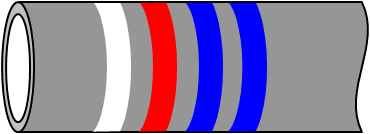
SM-110TXS is a low alloy Carbon steel OCTG material suitable for severe Sour Service applications while providing enhanced and guaranteed Collapse resistance compared to API ratings. SM-110TXS is a validated full fledge Sulfide Stress Cracking (SSC) resistant material developed based on SMC110 manufacturing experience.
SM-110TXS is equivalent to SM-110XS, produced using the same manufacturing route as SM-110XS with additional controls meant to achieve higher collapse resistance.
Diameters: 4 1/2” to 13 5/8”. Larger diameters available upon request.
Weights: as per API 5CT/ISO 11960
Special application: Please contact Nippon Steel engineer, should You require specific size, weight, drift, or any other information.
- Proprietary SM110TXS. TGP-3163 (latest revision)
- API 5CT / ISO 11960
- NACE MR0175 / ISO 15156-2
- API 5C3 / ISO 10400
- API 5C1 / ISO 10405
- VAM Book
SM-110TXS is designed to provide 110 SMYS physicals for casing applications, while remaining SSC resistant in Severe Sour service condition corresponding to region 3, High H2S combined with low pH, as defined by NACE MR0175/ISO15156-2 (Fig 1).

Fig. 1 : Sour Service regions in the pH vs H2S diagram
* Note : Even though this low pH corner is considered non-sour as far as H2S is concerned, caution needs to be exercised, as High Strength materials may become susceptible to Environmental Cracking (EC) even with no or very limited H2S.
There is a fair amount of confusion in relation to the H2S partial pressure limit applicable to 110 ksi sour service material.
ISO 11960 in its 2011 revision recognizes the existence of C110 material. The actual application of this ISO C110 material in terms of sour service is left up to the end user judgment through the following statement ISO 11960 (2011 revision) paragraph 7.14.1
General guidance:
The purchaser should refer to ISO 15156-2 or ANSI-NACE MR0175/ISO 15156-2 for guidance on the usage of grades C90, T95 and C110. Particular attention should be given to the application of grade C110 in ISO 15156-2 or ANSI-NACE MR0175/ISO 15156-2 SSC regions 2 or 3, as this material is not suitable for all sour (hydrogen sulfide containing) service applications.
NOTE: The SSC test is for quality control purposes and does not qualify the material for any specific sour service application. It is the product user’s responsibility to ensure that the product is suitable for the intended application.
Referring to ISO 15156 / NACE MR0175, ISO specified C110 application is restricted to either Region 1 per fig 1, or to any H2S partial pressure as long as the material is exposed to temperature always exceeding 65°C (150°F).
SM-110TXS is a validated full fledge Sulfide Stress Cracking (SSC) resistant material usable for casing applications anywhere within Regions 1, 2 & 3 of ISO 15156-2 pH versus H2S partial pressure diagram, that is any combination of ppH2S and temperature under in situ pH occurring in production environments.
Sulfide Stress Cracking phenomenon is less critical when temperature increases (i.e. increasing depth), whereas problems associated with extreme external pressure conditions usually increases with depth. As a consequence, the necessity of SM-110TXS usage results from the specific combination of unusually high pressure gradient and / or low temperature gradient. Typical applications are :
- Pre-salt formations, salt dome, clastic formation
- Wildcat drilling
In addition, enhanced collapse resistance can offer well design flexibility where controls of string weight and wall thickness are critically important:
- Tight clearance applications such as contingency drilling liners
- Oversized Drift for intermediate and production Casing
- Deep Offshore applications where slim and light design is critical
For a more detailed assessment please contact Nippon Steel engineers.
| PROCESS | DESCRIPTION |
|---|---|
| Steel making | Ladle refined, fully killed and vacuum degassed; continuously cast to a fine grained practice |
| Pipe making | Seamless |
| Heat treatment | Quenched and Tempered |
| YIELD STRENGTH KSI |
TENSILE STRENGTH KSI |
ELONGATION % |
HARDNESS HRC |
TECHNICAL NOTE | |
|---|---|---|---|---|---|
| Min | Max | Min | Min | Max | |
| 110 | 120 | 115 | API Formula | 29.0 | Application: Unlimited H2S Tested: 85% SMYS, 1bar H2S, NACE A, Sol-A Collapse: Refer to MDS / Tech Info |
| UNIT | 25°C | 50°C | 100°C | 150°C | 200°C | 250°C | |
|---|---|---|---|---|---|---|---|
| Density | Kg/m3 | 7750 | 7740 | 7730 | 7720 | 7700 | 7680 |
| Young's modulus | GPa | 212 | 211 | 209 | 206 | 203 | 200 |
| Poisson's Ratio | - | 0.30 | 0.30 | 0.30 | 0.30 | 0.29 | 0.29 |
| Tensile strength de-rating | % | 100 | 96.3 | 94.3 | 95.2 | 95.2 | 95.2 |
| Yield strength de-rating | % | 100 | 95.8 | 93.8 | 92.3 | 88.2 | 86.8 |
| Thermal Diffusivity | x10-6 m2/s | 11.9 | 11.9 | 11.5 | 11.0 | 10.3 | 9.74 |
| Heat Capacity | x106 J/m3 deg.C | 3.49 | 3.61 | 3.72 | 3.83 | 3.97 | 4.17 |
| Thermal Conductivity | W/m deg.C | 41.5 | 42.9 | 42.8 | 42.1 | 40.9 | 40.6 |
| Specific Heat | J/Kg deg.C | 450 | 466 | 481 | 496 | 516 | 543 |
| Thermal expansion | x10-6 / deg.C | - | 12.5 | 12.3 | 12.4 | 12.6 | 12.8 |
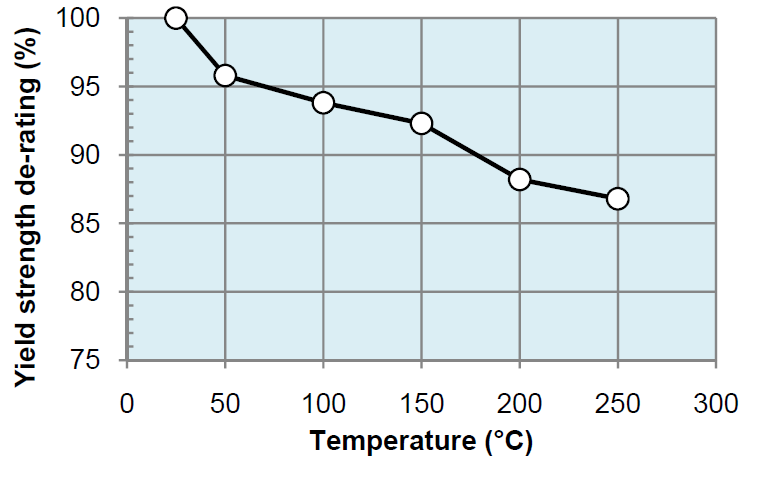
Temperature increase tends to minimize materials SSC susceptibility, and this tendency can be observed on API grades as well where, according to NACE MR0175 / ISO 15156-2, at higher temperature exposures high strength materials can be used in Region 3 of NACE MR0175/ISO15156-2 pH-H2S domain diagram (please refer to Fig 1).
Referring to API P110 grade in particular, this material can be used in high H2S environments if and only if the material is exposed to temperatures exceeding 80°C / 175°F (Fig. 2):
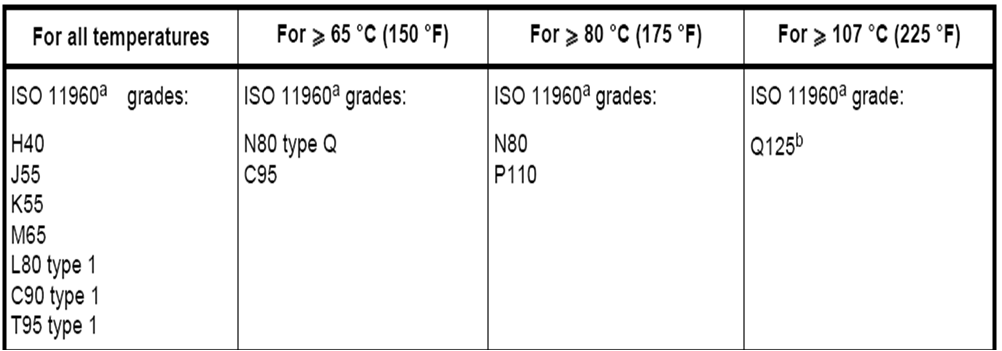
Fig. 2 : SSC Temperature thresholds for API Carbon steel grades according to NACE MR0175 / ISO 15156-2.
These 20 years of experience in manufacturing SM-C110 allowed for Nippon Steel to optimize the different processes inclusive of stringent QC, resulting in upgrading of the material being able to withstand ANY H2S partial pressure at ANY temperature as highlighted by the below SSC test results (Figure 3).
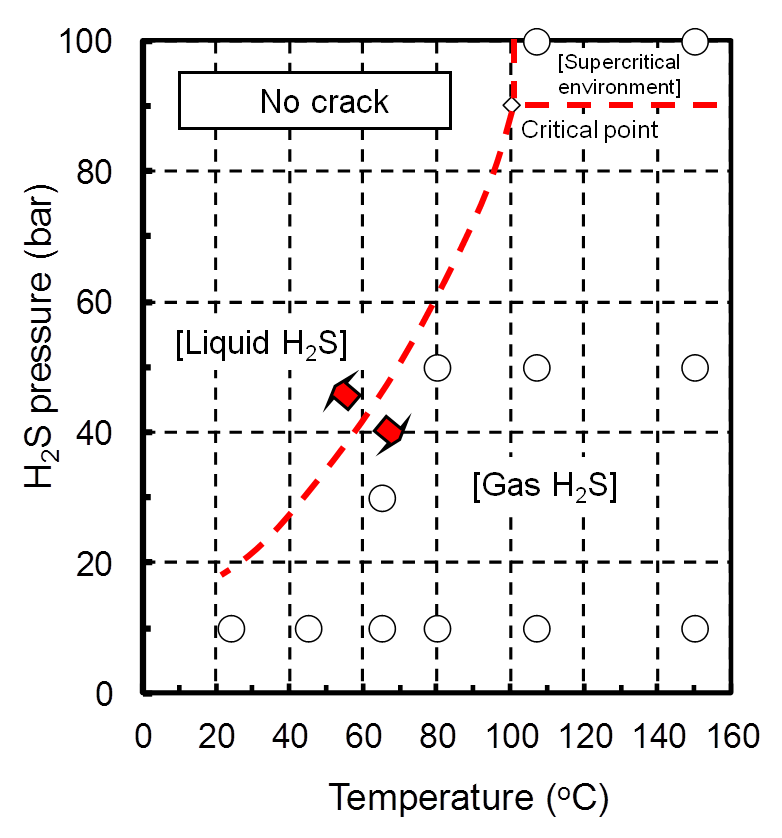
Fig. 3 : SM-110XS SSC resistance versus H2S pressure and temperature
- 4 point bent beam test at 90% AYS,
- H2S partial pressure from 10 to 100 bars,
- Test temperature from 24 to 107°C
- Test solution: 5% NaCl
- Test duration from 720 hrs to 2160 hrs
- pH values from 3.0 to 3.50
The above test verified SM-110XS SSC resistance as a function of temperature and H2S partial pressure. These conditions were selected to maximize the H2S partial pressure within the gas phase known to be the most severe in terms of SSC.
SM-110TXS is equivalent to SM-110XS, produced using the same manufacturing route as SM-110XS with additional controls meant to achieve higher collapse resistance.
Pipe dimensions such as Diameter (D) or wall thickness (t) and mechanical characteristics such as the material Yield Strength are the first parameters dictating tubular Collapse resistance. Figure 4 specifically illustrates the commensurate influence of the D/t ratio (Diameter over wall thickness).
Nippon Steel, on SM-110TXS High Collapse & Sour Service series, applies tighter tolerances to influential parameters, such as ovality, eccentricity, OD and wall thickness. In addition, a specific chemistry and strict heat treatment control are used to ensure steel structural homogeneity and low residual stresses.
Figure 4 demonstrates SM-110TXS enhanced performances compared to API P110 collapse resistance (derived from API 5C3 / ISO 10400 formula), through its physical test results, guaranteeing the published minimum Collapse ratings.
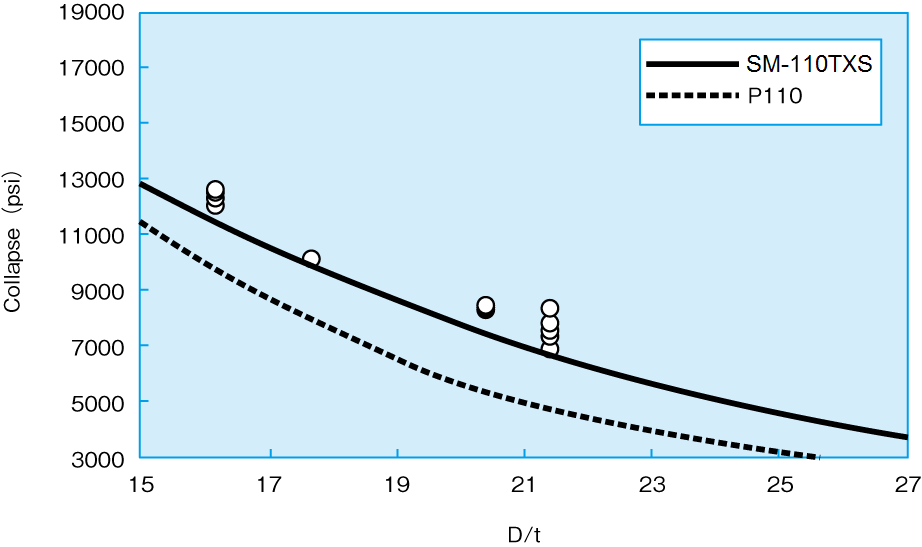
Fig. 4 : Collapse pressure on SM-110TXS versus API P110
Table 5 features SM-110TXS High Collapse values for a large selection of pipe sizes. They exceed API P110 collapse ratings by a factor ranging from +15% to +40% !!! to be revised.
Table 5 : SM-110TXS High Collapse values
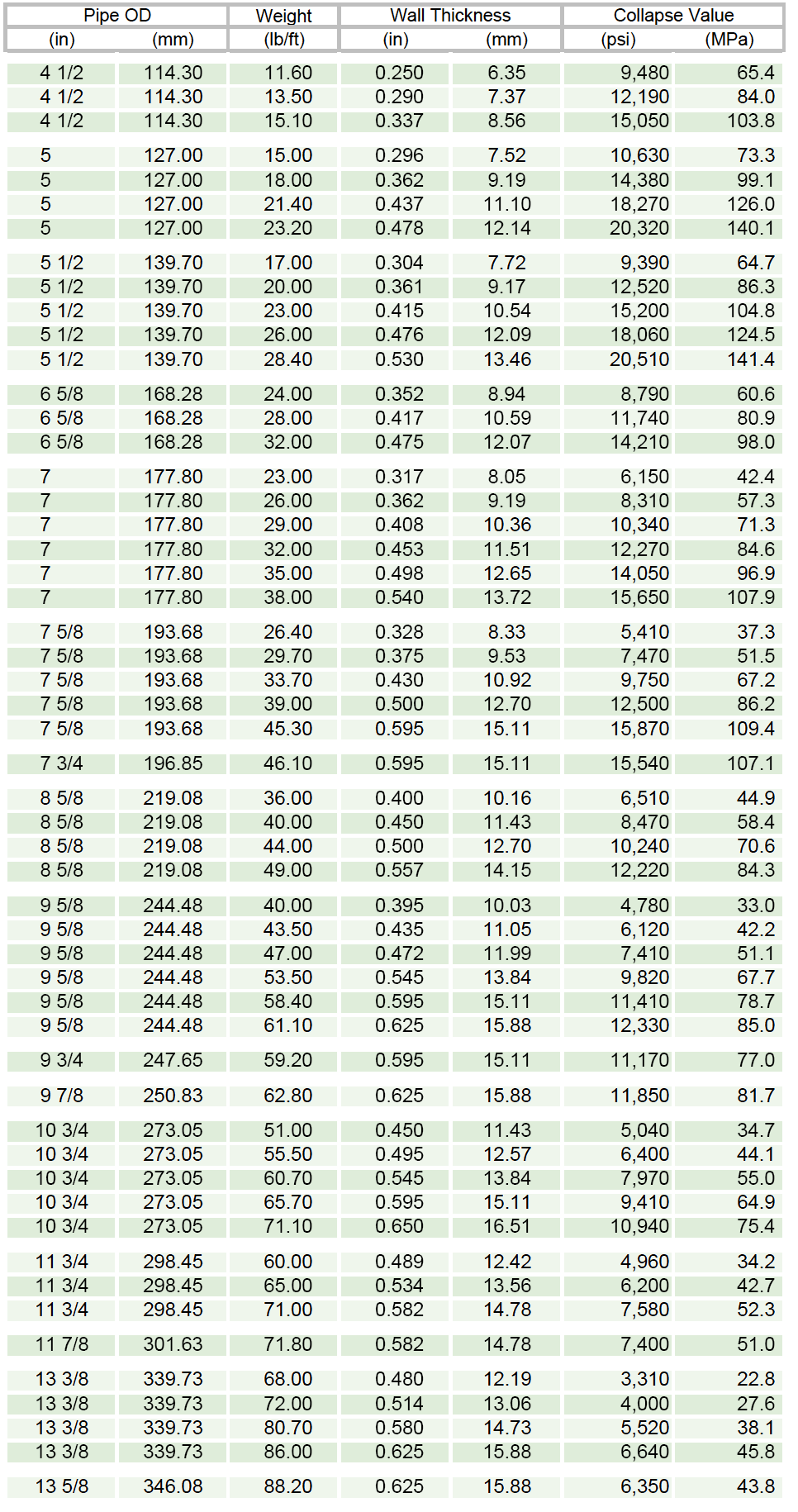
Table 5 covers most common sizes and wall thicknesses; upon request Nippon Steel can provide larger sizes up to 16", specific or tailor-made sizes, weights or special drifts.
For additional information about material performances please contact Nippon Steel engineers.
Health, Safety and Environment
While state-of-the-art HSE rules are applied throughout Nippon Steel manufacturing process, proprietary and specific HSE regulations shall be applied along the life cycle of the pipe until it reaches its final position in the well, according to each operator’s rules. This particularly applies to all phases of handling and transportation, assembly on the rig floor, and rig return if applicable. OCTG are heavy and by nature unstable. Special care shall be paid to potential risks of injury whenever handling OCTGs. Walking on pipes shall be avoided at all times. Usage of Personal Protection Equipments (PPE) is mandatory. Equipment and procedures will be established to capture the possible wastes generated during maintenance (cleaning, coating, doping) and disposed according to local regulations. This applies in particular to storage dope, running dope, or cleaning water wastes.
Best practices for transportation, handling and storage of OCTG in general are covered by ISO 10405 / API RP5C1. VAM Book is also a good source of handling practices for VAM connections. In addition to these general rules, specific care is recommended pertaining to SM110TXS, because improper handling could affect the material performances and by extension the corrosion resistance :
- Prevention of Spot Hardening
For more specific information please contact Nippon Steel engineers